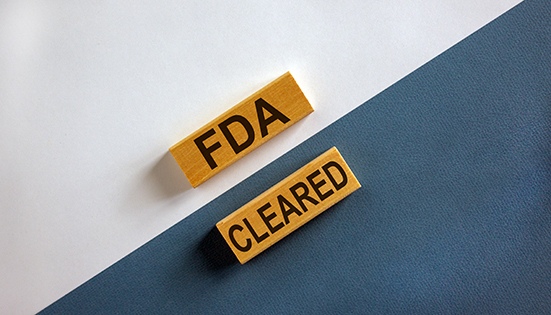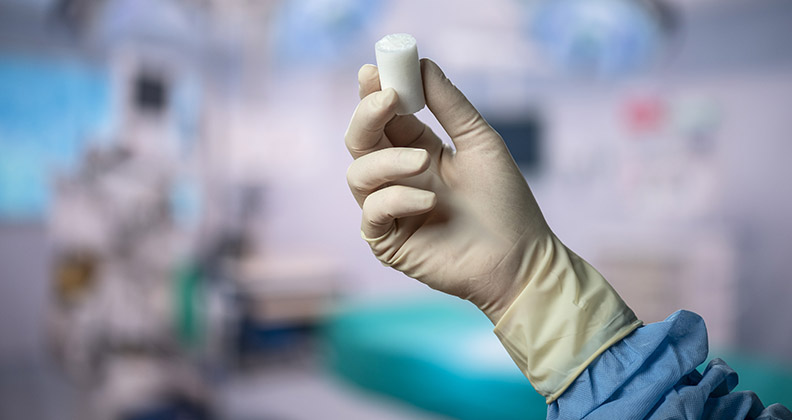Two of the greater challenges that trauma surgeons face today are an increased number of complex fractures and complications from fractures. The Orthopaedic Trauma Association (OTA) convened for its annual meeting in October, and many of the themes that resonated in surgeon voices and research—areas ripe for device company product development—fell in line with those two issues.
For greater context, we spoke with Michael D. McKee, M.D., Chairman of the Department of Orthopaedic Surgery at the University of Arizona College of Medicine and Program Chair of the Annual Meeting. Dr. McKee outlined four areas of opportunity identified at the meeting: periprosthetic fractures, infection prevention, early weight-bearing recommendations and percutaneous pelvic fractures.
Periprosthetic Fractures
Dr. McKee: A number of papers and talks centered on the use of various implants to treat periprosthetic fractures, especially in the lower but also the upper extremities, because these fractures are becoming much more common. The number of patients who have multiple periprosthetic fractures is increasing, so now we’re seeing interprosthetic fractures—meaning a fracture not only below the total hip, for example, but below a total hip and above a total knee in the same leg.
One of the teaching points made by several authors was that if you have a total hip or bipolar hip and you break below it, rather than simply fixing the fracture, perhaps it’s time for orthopaedic surgeons to consider protection of the entire femur. Even if you have success with a fracture union, there is a much-increased rate of another fracture below your implant.
BONEZONE: What is your recommendation for femur protection?
Dr. McKee: In the previous example, you would need an implant that would go all the way down to the condyles, with screws across it, to help protect the entire femur at risk. Companies are designing and manufacturing such implants, or a surgeon may choose to maneuver a regular implant to do the job in that fashion.
Similarly, implants that are amendable to fix a fracture between a total knee and total hip will become more popular as time moves on, and I think a number of other authors thought the same thing.
For periprosthetic fractures, which often occur in older women, making them non-touch or weight-bearing afterward is counterproductive and impractical. We need to make our construct strong enough so that we can allow full weight-bearing after [surgery].
Infection Prevention
Dr. McKee: Infection is becoming an extremely significant concern in multiple areas of orthopaedic trauma, including occurrence of acute infections after fracture fixation and management of chronic infections in previous fixation.
A number of new tests exist to diagnose periprosthetic infection or PPI. Culture and investigational techniques have been designed to increase the sensitivity of our cultures, because we know that a number of people with infection don’t culture positive. That’s a hard thing to deal with, because you don’t know what bacteria you’re fighting, which is always a bad thing. When it comes to preventing infection, much is said about local antibiotics, which may or may not be good. Numerous trials are ongoing in that regard. Lastly, once you have an infection, what is the best treatment? It could be local, or remove the implant and insert a cement spacer.
BONEZONE: Is the infection dialogue being driven by more infections, changes in healthcare economics, both, or something else?
Dr. McKee: First, in the population that we look after now—the aging and sick—we see fractures in people with bad diabetes, renal heart disease and people who frankly would have died before who are now being kept alive. The risk of infection with some of these patients is extremely high with fracture fixation. Yet, they have fractures that require fixation to keep them moving and alive. We are seeing more patients with infections and who are sicker. Second is reimbursement. I’m not an economist, but one thing I’m told by people who are smarter than I am is that readmission for an infection within the first 30 days of an operation is an economic killer for the hospital. In addition to complications for the patient, just one readmission takes away the profit made from eight to ten other patients. The focus is to stop this from happening and minimize readmission rates.
Weight-Bearing Loads
Dr. McKee: Among discussions on evidenced-based medicine and how it can change practices, one of the highlights was weight-bearing. We used to fix fractures and keep patients non-weight-bearing for six weeks after, which is really difficult for some, especially those who want to get back to work and activity quickly. Niloofar Dehghan, M.D., of The CORE Institute did a study showing that it’s acceptable to let people weight bear after fixation. Other talks addressed femoral and tibial fractures that allowed early weight-bearing, and by early I mean the two-week visit rather than the six-week visit. There is evidence that it gets people back to work and activity quicker, and may impact long-term benefits such as range of motion and less atrophy and fatigue.
Pelvic Devices
Dr. McKee: We’re seeing an increasing interest in percutaneous fixation of elderly patients with pelvic fractures. Traditionally, those have been treated non-operatively. We always thought that those patients healed quickly. It’s becoming clear that this is not the case, and in some instances those fractures do need fixation. Implants and techniques could be designed to improve on what we use now.
A record-breaking 1,700 surgeons attended OTA’s 2017 Annual Meeting. A look at the research, discussed by anatomical region, can be found in the Final Program Book.
CL
Carolyn LaWell is ORTHOWORLD's Chief Content Officer. She joined ORTHOWORLD in 2012 to oversee its editorial and industry education. She previously served in editor roles at B2B magazines and newspapers.




